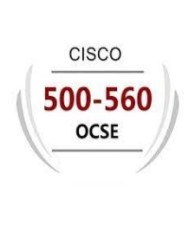As the automotive industry accelerates toward a future of electric vehicles (EVs), automakers face mounting financial and operational pressures. As profits from gasoline-powered vehicles are being funneled into R&D for EV innovation, automakers must grapple with a rapidly evolving and increasingly complex digital landscape. Striking a balance between maintaining profitability and fortifying security has become a critical challenge, especially given the heavy reliance on production uptime and the ever-present threat of sophisticated cyberattacks.For automakers, downtime is more than a technical setback—it’s a financial and reputational crisis, with minutes potentially costing millions of dollars. Add to this the rise of ransomware and targeted attacks aimed at intellectual property theft or operational disruption, and the stakes are exponentially higher. Further complicating the situation, traditional network segmentation strategies like firewalls create bottlenecks and introduce complexities that can lead to extended outages, higher costs, and even compromised security.In this post, we’ll explore how auto manufacturers can rethink their segmentation strategies to address these challenges. By adopting Zscaler’s device segmentation solution, automakers can simplify their network environments, reduce the blast radius of potential breaches, and seamlessly enhance their security posture. All of this can be achieved without costly infrastructure upgrades, extended downtime, or complex, IT-heavy change processes. It’s time for a smarter, more resilient approach to protecting the factories of the future.Firewalls Fall ShortShould an attack succeed, it is critical to minimize the blast radius. In a traditional manufacturing environment, to separate Line 1 from Line 2 from Line 3—not to mention separating the lines from the IT network—the most common approach would be to use firewalls. And in large manufacturing operations, that could mean many firewalls.However, a firewall-based environment creates complexities that increase costs and can inadvertently lead to downtime.Challenge 1: Understanding Traffic FlowsThe first challenge with a firewall-based solution is to understand traffic patterns. What should be the expected traffic flow from Line 1 to Line 2 or between the OT network and the IT network? Does the organization truly have a grasp on what should be talking to what? (Probably not. Even world-class companies struggle with visibility of traffic flows.)If we understand at a high level what should be talking with what, the next challenge for firewalls becomes: on what IPs, ports, and protocols do we allow this communication? This is where organizations typically throw up their hands and begin to rethink their segmentation strategy.Soon, it becomes clear that with complicated rulesets to permit the appropriate traffic to flow between the lines and IT networks, administrators will play a game of perpetual whack-a-mole, trying to identify IPs, ports, or protocols when something breaks. Eventually, they will typically submit to an any-to-any policy that essentially undoes their segmentation efforts.Challenge 2: Changes on the Plant FloorLet’s give the organization the benefit of the doubt for a minute and suppose they do manage to implement some segmentation policies. What happens when there is a change needed in the environment? Perhaps a new PLC replaces a broken one. Maybe a new component is added to the line. What if a software update changes some communication protocols?When downtime leads to loss of revenue, identifying the appropriate person with the correct skill set to make the firewall change, then executing that change, can lead to an extended outage window. Complicated change processes coupled with complex user interfaces inevitably cost money.Simplifying Security, Reducing Costs, and Enhancing Admin ExperienceIt’s rare to find a solution that simultaneously enhances user experience, strengthens security, and reduces costs—but Zscaler Zero Trust Device Segmentation achieves exactly that.With Zscaler, automotive manufacturers can effectively segment their manufacturing networks down to the device level without the need for multimillion-dollar capital investments. This approach not only improves security posture, but also provides complete visibility into traffic flows—all through an intuitive, user-friendly interface.One of the key benefits of Zero Trust Device Segmentation is cost efficiency. Unlike other solutions that require expensive new hardware, additional memory, or software upgrades, the Zscaler solution leverages existing switches already deployed in the manufacturing environment. This reduces upfront investment and avoids the need for costly and time-intensive infrastructure overhauls. Since Zscaler’s solution doesn’t require a downtime window during deployment, manufacturers can implement it without disrupting operations. Traditional hardware replacement projects, often requiring years due to limited maintenance windows, could stretch across an entire decade—Zscaler eliminates this extended timeline.By attaching a Zscaler segmentation gateway to the existing network switch and simply redirecting the trunk port, administrators gain complete visibility into all devices communicating within the network. Traffic flows are displayed in a single, easy-to-understand map, providing unparalleled clarity.With this visibility, administrators can quickly create logical, device-specific segmentation policies tailored to their operational needs. The result is a simplified and streamlined process that minimizes configuration complexity and boosts operational efficiency. Zscaler Zero Trust Device Segmentation ensures granular control over the environment while keeping costs low and deployment seamless.Minimizing Downtime During ChangesWith Zscaler’s auto-discovery feature, replacing a broken PLC becomes hassle-free. If an onsite technician swaps out a defective PLC, Zscaler uses AI and machine learning algorithms to automatically detect the new device and seamlessly apply the appropriate policy, significantly reducing downtime and ensuring uninterrupted operations.In situations where a technician needs to make adjustments to the segmented network, Zscaler’s intuitive user interface simplifies the process. With minimal training, technicians can independently perform basic policy or device updates without requiring assistance from higher-level administrators, reducing delays and increasing line uptime.ConclusionAs automakers transition to electric vehicles, traditional firewall-based segmentation struggles to meet the demanding needs of modern manufacturing. Zscaler Zero Trust Device Segmentation offers a smarter, more efficient alternative—providing granular, device-level security without costly hardware upgrades or extended downtime. By simplifying deployment, minimizing downtime, and enabling clear traffic visibility, Zscaler strengthens security, reduces complexity, and protects operational uptime. With Zscaler, automakers can safeguard their manufacturing networks while maintaining profitability and preparing for the future of EV innovation.
[#item_full_content] As the automotive industry accelerates toward a future of electric vehicles (EVs), automakers face mounting financial and operational pressures. As profits from gasoline-powered vehicles are being funneled into R&D for EV innovation, automakers must grapple with a rapidly evolving and increasingly complex digital landscape. Striking a balance between maintaining profitability and fortifying security has become a critical challenge, especially given the heavy reliance on production uptime and the ever-present threat of sophisticated cyberattacks.For automakers, downtime is more than a technical setback—it’s a financial and reputational crisis, with minutes potentially costing millions of dollars. Add to this the rise of ransomware and targeted attacks aimed at intellectual property theft or operational disruption, and the stakes are exponentially higher. Further complicating the situation, traditional network segmentation strategies like firewalls create bottlenecks and introduce complexities that can lead to extended outages, higher costs, and even compromised security.In this post, we’ll explore how auto manufacturers can rethink their segmentation strategies to address these challenges. By adopting Zscaler’s device segmentation solution, automakers can simplify their network environments, reduce the blast radius of potential breaches, and seamlessly enhance their security posture. All of this can be achieved without costly infrastructure upgrades, extended downtime, or complex, IT-heavy change processes. It’s time for a smarter, more resilient approach to protecting the factories of the future.Firewalls Fall ShortShould an attack succeed, it is critical to minimize the blast radius. In a traditional manufacturing environment, to separate Line 1 from Line 2 from Line 3—not to mention separating the lines from the IT network—the most common approach would be to use firewalls. And in large manufacturing operations, that could mean many firewalls.However, a firewall-based environment creates complexities that increase costs and can inadvertently lead to downtime.Challenge 1: Understanding Traffic FlowsThe first challenge with a firewall-based solution is to understand traffic patterns. What should be the expected traffic flow from Line 1 to Line 2 or between the OT network and the IT network? Does the organization truly have a grasp on what should be talking to what? (Probably not. Even world-class companies struggle with visibility of traffic flows.)If we understand at a high level what should be talking with what, the next challenge for firewalls becomes: on what IPs, ports, and protocols do we allow this communication? This is where organizations typically throw up their hands and begin to rethink their segmentation strategy.Soon, it becomes clear that with complicated rulesets to permit the appropriate traffic to flow between the lines and IT networks, administrators will play a game of perpetual whack-a-mole, trying to identify IPs, ports, or protocols when something breaks. Eventually, they will typically submit to an any-to-any policy that essentially undoes their segmentation efforts.Challenge 2: Changes on the Plant FloorLet’s give the organization the benefit of the doubt for a minute and suppose they do manage to implement some segmentation policies. What happens when there is a change needed in the environment? Perhaps a new PLC replaces a broken one. Maybe a new component is added to the line. What if a software update changes some communication protocols?When downtime leads to loss of revenue, identifying the appropriate person with the correct skill set to make the firewall change, then executing that change, can lead to an extended outage window. Complicated change processes coupled with complex user interfaces inevitably cost money.Simplifying Security, Reducing Costs, and Enhancing Admin ExperienceIt’s rare to find a solution that simultaneously enhances user experience, strengthens security, and reduces costs—but Zscaler Zero Trust Device Segmentation achieves exactly that.With Zscaler, automotive manufacturers can effectively segment their manufacturing networks down to the device level without the need for multimillion-dollar capital investments. This approach not only improves security posture, but also provides complete visibility into traffic flows—all through an intuitive, user-friendly interface.One of the key benefits of Zero Trust Device Segmentation is cost efficiency. Unlike other solutions that require expensive new hardware, additional memory, or software upgrades, the Zscaler solution leverages existing switches already deployed in the manufacturing environment. This reduces upfront investment and avoids the need for costly and time-intensive infrastructure overhauls. Since Zscaler’s solution doesn’t require a downtime window during deployment, manufacturers can implement it without disrupting operations. Traditional hardware replacement projects, often requiring years due to limited maintenance windows, could stretch across an entire decade—Zscaler eliminates this extended timeline.By attaching a Zscaler segmentation gateway to the existing network switch and simply redirecting the trunk port, administrators gain complete visibility into all devices communicating within the network. Traffic flows are displayed in a single, easy-to-understand map, providing unparalleled clarity.With this visibility, administrators can quickly create logical, device-specific segmentation policies tailored to their operational needs. The result is a simplified and streamlined process that minimizes configuration complexity and boosts operational efficiency. Zscaler Zero Trust Device Segmentation ensures granular control over the environment while keeping costs low and deployment seamless.Minimizing Downtime During ChangesWith Zscaler’s auto-discovery feature, replacing a broken PLC becomes hassle-free. If an onsite technician swaps out a defective PLC, Zscaler uses AI and machine learning algorithms to automatically detect the new device and seamlessly apply the appropriate policy, significantly reducing downtime and ensuring uninterrupted operations.In situations where a technician needs to make adjustments to the segmented network, Zscaler’s intuitive user interface simplifies the process. With minimal training, technicians can independently perform basic policy or device updates without requiring assistance from higher-level administrators, reducing delays and increasing line uptime.ConclusionAs automakers transition to electric vehicles, traditional firewall-based segmentation struggles to meet the demanding needs of modern manufacturing. Zscaler Zero Trust Device Segmentation offers a smarter, more efficient alternative—providing granular, device-level security without costly hardware upgrades or extended downtime. By simplifying deployment, minimizing downtime, and enabling clear traffic visibility, Zscaler strengthens security, reduces complexity, and protects operational uptime. With Zscaler, automakers can safeguard their manufacturing networks while maintaining profitability and preparing for the future of EV innovation.










